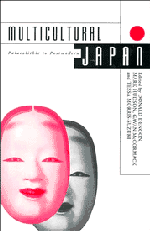Book contents
- Frontmatter
- Contents
- List of Figures and Tables
- List of Contributors
- Abbreviations
- Introduction
- Part 1 Archaeology and Identity
- Part 2 Centre and Periphery
- Part 3 Contact with the Outside
- 8 Some Reflections on Identity Formation in East Asia in the Sixteenth and Seventeenth Centuries
- 9 Siam and Japan in Pre-Modern Times: a note on mutual images
- 10 Indonesia under the ‘Greater East Asia Co-Prosperity Sphere’
- 11 Japanese Army Internment Policies for Enemy Civilians during the Asia-Pacific War
- Part 4 The Japanese Family
- Part 5 Culture and Ideology
- Afterword: Diversity and Identity in the Twenty-First Century
- Index
9 - Siam and Japan in Pre-Modern Times: a note on mutual images
Published online by Cambridge University Press: 05 November 2011
- Frontmatter
- Contents
- List of Figures and Tables
- List of Contributors
- Abbreviations
- Introduction
- Part 1 Archaeology and Identity
- Part 2 Centre and Periphery
- Part 3 Contact with the Outside
- 8 Some Reflections on Identity Formation in East Asia in the Sixteenth and Seventeenth Centuries
- 9 Siam and Japan in Pre-Modern Times: a note on mutual images
- 10 Indonesia under the ‘Greater East Asia Co-Prosperity Sphere’
- 11 Japanese Army Internment Policies for Enemy Civilians during the Asia-Pacific War
- Part 4 The Japanese Family
- Part 5 Culture and Ideology
- Afterword: Diversity and Identity in the Twenty-First Century
- Index
Summary
Siamese contact with Japan might be traced back to the end of the fourteenth century when an Ayutthayan royal envoy to the Korean court reportedly made a one-year stay in an unidentified place in Japan before reaching the Korean capital in 1388. There are a few more references in Korean sources to the visits of Siamese envoys, who might or might not have touched Japanese soil before they reached the Korean capital. These records of sporadic Siamese contact with Japan, however, do not necessarily imply that the Thai ever entertained an idea of opening trade relations with Japan in those early years.
The earliest commercial contact of the Siamese with Japan was made not directly but through the intermediary of the Ryūkyūan merchants, who seem to have started their visits to Ayutthaya in the first decades of the fifteenth century. They exported to Ayutthaya such Japanese products as swords and paper fans in exchange for Siamese sappanwood and pepper, which were eventually brought to China as their tribute, whereas the Japanese swords, as is widely known, were cherished by the Siamese royalty as part of their indispensable regalia. Thus, thanks to the Ryukyuan traders, Japan had been known to the Siamese, by the fifteenth century at the latest, as a producer of swords as well as refined fans.
Starting in the beginning of the next century, the Iberians began their religious-military expansion toward Asia. The Portuguese, who occupied Malacca in 1511, sent their envoy to the Siamese capital of Ayutthaya in the following year.
- Type
- Chapter
- Information
- Multicultural JapanPalaeolithic to Postmodern, pp. 153 - 159Publisher: Cambridge University PressPrint publication year: 1996



